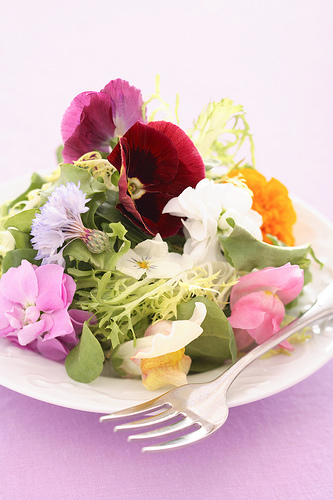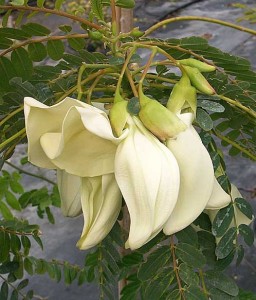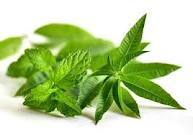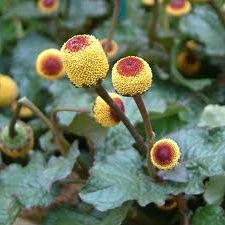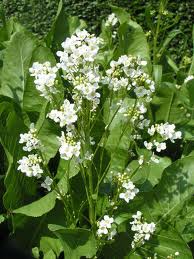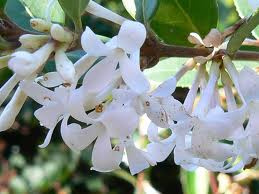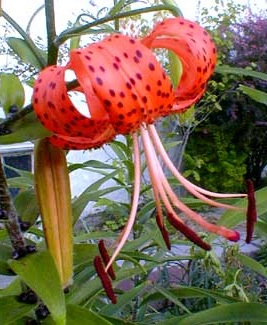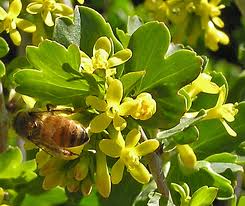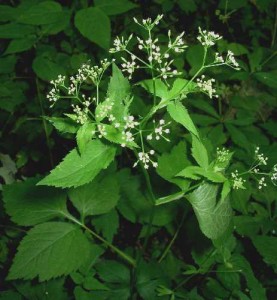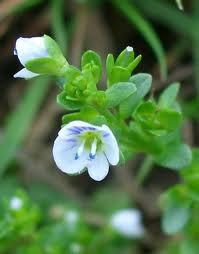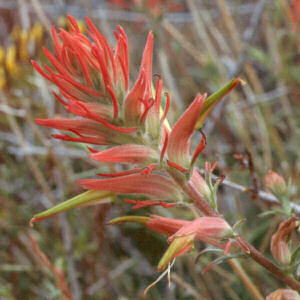Sesbania Grandifolia, Lemon Verbena, Szechaun Buttons, Horseradish, Tea Olive, Tiger Lily, Currants, Honewort, Thyme, Indian Paint Brush
Sesbania grandifolia, also called the Vegetable Hummingbird Tree and the Scarlet Wisteria, has managed to work its way into warmer areas of the world. If you have a frost you might be able to pot it but you won’t find it out in the field. Originating in either India or southeast Asia, it grows best in hot, humid areas including south Florida. The shrub’s long narrow pods are eaten as a vegetable dish, similar in use as string beans. The seeds are fermented into a tempeh turi. Young leaves and shoots are eaten in salads or as a pot herb or in soups and stews. Sesbania grandifolia flowers are eaten raw in salads, boiled, fried or use in curries, stews and soups. They taste like mushrooms and are rich in iron and sugar.
There is hardly an established garden that doesn’t have a Lemon Verbena in it. A native of South America it was “discovered” in 1785 in Buenos Aires. By 1797 it was the rage of England and has been exported around the world since around 1785. It’s in a well-known association with a lot of plants used for seasoning and antioxidants. The Aloysia triphylla was named to compliment the morganatic wife of Infant Lois Anonio de Borbon, prince of Asturias and brother to King Carlos III of Spain. The Infant was a supporter of the arts and botany. Young leaves are eaten as spinach. they are also used to flavor fruit cups, jellies, cold drinks, salads, omelets, salad dressings, and vegetable dishes. The leaves or tiny, citrus-scented flowers, are brewed into a refreshing tea. Tea from just the flowers is sweeter.
Szechaun Buttons. No, they’re not from China but Brazil. This is an edible flower you will likely want to grow yourself rather than order. Right now a 30-blossom order is selling for $39.95 not including shipping. Why would you order them? Because they are the current party favor but they have other uses as well. Spilanthes acmella, aka, Acmella ocleracea, grow in Brazil. They are peppery like capsaicin, hence their name because of a heat similar to Szechuan peppers… well almost. The active chemical is spilanthol. That used to numb gums for toothaches. It causes a reaction with the trigeminal nerve pathway controlling the control motor and sensory functions of your mouth. The result is a tingling, popping sensation in the mouth. Kind of a cross between Pop Rocks and a 9-volt battery. Besides that, they are cooked and used in salads, sauces, soups, sorbets and as cocktail garnishes. You can add shredded uncooked greens to your salad, sparingly, or sprinkle some uncooked petals on your salad. The taste is herbal and slightly bitter. One high end restaurant uses them in a cheese plate. At another eatery the tiny petals and some lemon thyme are infuse a small pot of honey that accompanies roasted kabocha squash, sweet peppers and toasted walnuts. A third offers patrons a Concord grape soda float with lemon verbena sorbet into which shreds of Sechuan buttons are dispersed through a soda siphon. Did I mention they use Szechaun Bottons to flavor chewing tobacco in India?
My cousin in southern Quebec… actually first cousin once removed, Beulah Knudson nee Smith, grew the largest horseradish I ever saw. The winters are harsh thereabouts and that horseradish, Armoracia rusticana, was making the most of their very short growing season. Here in flat iron Florida it is too hot to grow horseradish except perhaps in the most extreme northern counties. Most everyone knows that horseradish is a hot root. In fact, the root is rather cleaver. The two chemicals that make horseradish hot have to be mixed to be hot but the plant keeps them in separate cells so they don’t bother the plant. Only when the cells are crushed together is a hot chemical created. It’s called “horse” radish because “horse” is also used to describe anything big or rough. Young leaves can be added to salads, pickled or cooked as a potherb. Sprouts can be added to salads, or the roots can be cooked as eaten that way. The flowers are edible, quite mild compared to the root. Sprinkle them on salads, throw them in when pickling or cooking string beans and the like.
If you go to an Asian market and buy “Cassia Blossom Jam” it is not from the Cassia clan at all but rather Osmanthus frangrans, the Tea Olive, also called the Fragrant Olive and Sweet Olive. Its name(s) gives you a good idea what it is used for. It a glossy evergreen with little white blossoms that bloom almost all year long, making it a favorite landscape plant where it is warm all year. The blossoms smell deliciously fragrant of ripe peaches or apricots. It tends to bloom in autumn, winter and spring. Fruit follows about six months later. The unripe fruit are preserved in brine like olives. The flowers are used to make tea fragrant as well as wine, liqueurs, and confections. The blossoms are either preserved in a salty brine or made into a sugary paste. The Osmanthus americana, the American Olive, is used a similar way.
Many lilies are called the Tiger Lily but botanists argue there is only one, Lilium landifolium, a native of Asia and Japan but naturalized in the northeast quarter of North America, among other places. Almost all of the Tiger Lily is edible, bulb to flower. In fact it is a cultivated crop in Asia and Japan turnips or parsnips in flavor. Flower buds are eaten raw or cooked, as are the flowers. The pollen is edible as well. Yes, I know there are dire warnings on the Internet that it is poisonous for humans but evidence of that is absent. Dr. François Couplan, author of the Encyclopedia of Edible Plants of North America told me “…Lilium bulbs and Hemerocallis flowers are commonly sold as food on eastern asian markets. And I’ve had lilium pollen myself, albeit in fairly small quantities, and never suffered any wrong effect…” It IS toxic to cats. One way to identify this lily from the natives is small black bulbils on the stem. While it is naturalized it usually does not go far from urban areas. When I used to traipse around the countryside in New England I always found these and daylilies near old or abandoned farms. In fact, out in the country they were usually right across the road from the farm house. See full article on site.
We used to ride our horses on abandoned roads, of which there were plenty. One was still passable if you had a vehicle with a high suspension because the road went over washed out ledge. It was no problem for the horses. At the top of the ledge were high bush blueberries, some eight feet tall. Just beyond the crest were two fallen-in farms, across the road from each other which usually meant the same family. Still growing at one of the homestead was currants. Currants, gooseberries and Kiwis are related to each other. Currants were made into jellies and jams as well as wine… very good wine. The natives dried them and use them in making pemmican. Some species, perhaps most, have edible flowers. At the top of the flower list is Ribes aureum, or Golden Currant, found in most of North America except the Old South. Another currant noted for flower edibility is Ribes cereum. Wax Currant, found in the western half of North America. Black Currant (Ribes nigrum) flower buds are used in ice cream and liqueurs. I would suspect the open flowers would be usable as well. And of course, the berries have many uses and have antioxidants. Incidentally, R. aureum is not Ribes odorata.
The Canadian Honewort, Cryptotaenia canadensis, grows all the way down to Florida, and covers the eastern two third of North America. A member of the carrot family, it can be found growing along streams and creeks or in low, wet ground. The entire plant is edible, cooked, root to flowers. Flowering season is May to August and the blossom are small. Also called Wild Chervil, the roots are usually boiled in salted water and served with oil; young leaves and stems are soaked in water to moderate flavor then cooked as a pot herb. Cooked flowers are edible as well. You can add a small portion to salads for their aromatic quality. Seeds are used for flavoring and the stems candied. Cryptotaenia japonica can be used in a similar way but needs far less cooking, usually just blanching. In warmer areas don’t mistake Tripogandra multiflora for it. The latter has black stems, large flowers, and is not edible.
I went to Crete in the spring once to hike Sanmaria Gorge, said to be the longest gorge in Europe if you count extreme southern Greece as geographically part of Europe proper. There was, however, a late season snow storm and the gorge was closed. So I hiked down Embrose Gorge, much smaller but not without its charms. I remember three things well from the hike. The first was the wonderful scent of wild thyme growing throughout the gorge. Next was literally being run over by a large heard of sheep and goats. And lastly later that evening discovering the local taverna-made rose smelled just like the sheep. Without thyme the chef and the herbalist would be hard pressed to find a suitable substitute. In the kitchen thyme has so many use including the blossoms. Thymus vulgaris, leaves and blossoms are used to flavor stuffing, fish, meat, fowl, cheese vinegar, gravies, sauces, bouquet garni, herbs de Provence, brine for olives, eggs, bread, tea and honey. Shoots are a garnish. The blossoms are milder than the leaves. And yes, later I got to hike down Sanmaria Gorge, a hike of a lifetime.
While recreating my foraging instructor page for the new website I considered using the state flower next to each separate state entry. Unfortunately few states have state flowers that are edible. Wyoming is the exception. Its state flower is the Indian Paint Brush though it is found in most western states and has a huge variety of common names including — no surprise here — the Wyoming Paintbrush. By statute, however, it is officially Indian Paint Brush. It was adopted as the state flower 31 January 1917 beating out columbine and fringed gentian. There was heated debate from the opponents, however. One said the Indian Paint Brush was not common in the state, had too many varieties only an expert could tell apart, was parasitic by feeding on the roots of others, wasn’t generally liked and that the fringe gentian had been already chosen by Wyoming school children as the sentimental favorite. He left out the Indian Paint Brush encourages foraging but no doubt would have if he had known it. This particular paint brush, Castillija linariaefolia, is the best tasting in its genus. Maybe that’s why it won. Flowers are eaten raw. However the plant can accumulate selenium making it toxic to cattle.

